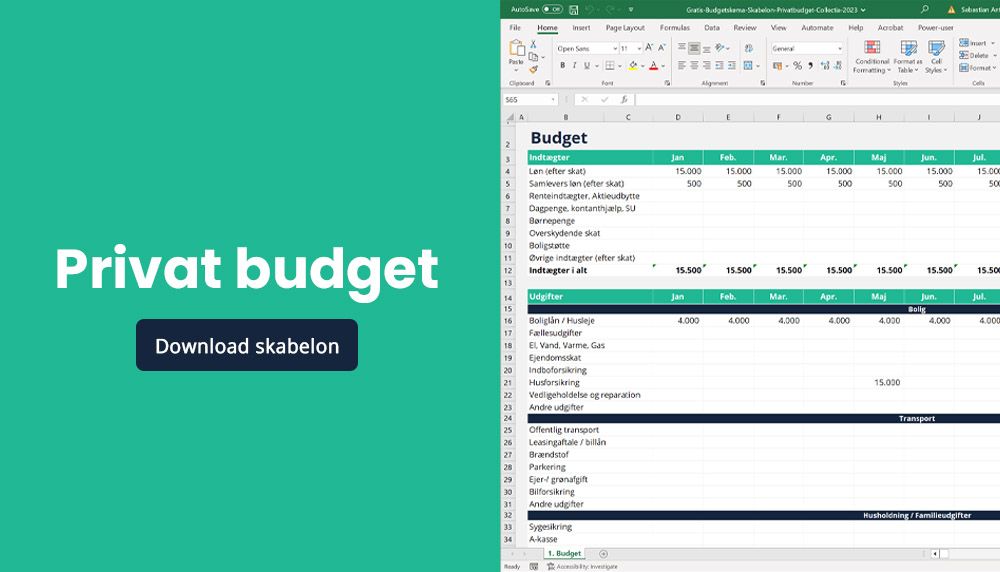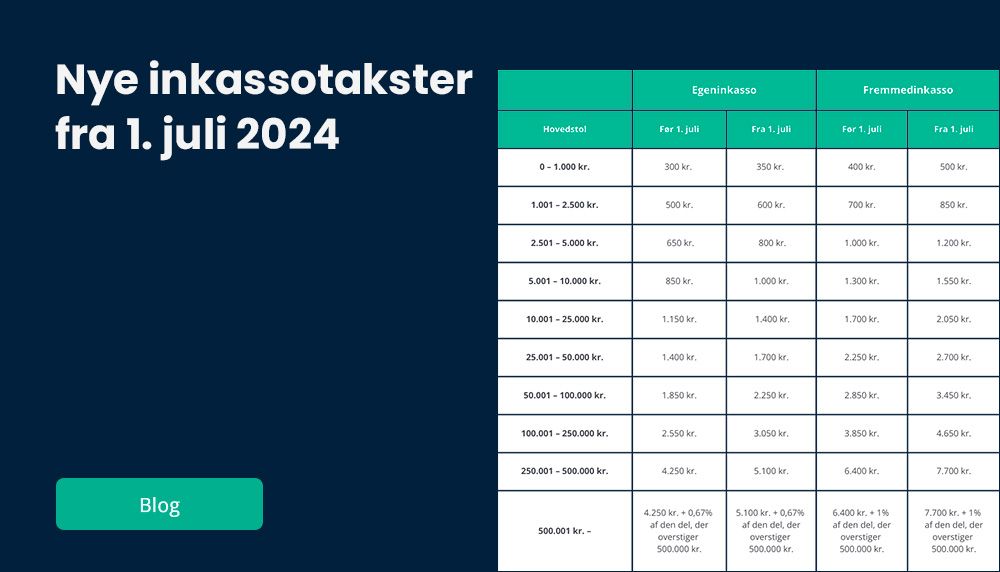
Invoice - How do I make a good invoice?
If you are a business owner - you undoubtedly know what an invoice is, either you send it yourself or have your accountant do it. But at Collectia we often get questions about how a good invoice is made, and from time to time we also see a need among our customers, of all sizes, to get this refreshed. Unfortunately, many people often have errors on their invoice, often so bad that the invoice is legally not valid, and where debt collection becomes difficult and sometimes impossible because the invoice is not filled out correctly.
Invoice - what is it?
An invoice is a legal document that documents a purchase, typically from a trader. The invoice contains basic information about what you have bought and how much of a specific good or service you have purchased.
The invoice is used by private individuals as documentation of their purchase, and thus to be able to maintain and prove their purchase in the event of, for example, complaints, claims or warranty cases on the product.
For businesses, the invoice is also used to maintain their right of complaint and warranty - but also to document their purchases for their accounts. For businesses, an invoice is used to record the purchases made and to get any taxes and VAT refunded.
Last but not least, an invoice is also used by the seller to document his sales and turnover. Secondly, the invoice is also a very important piece of documentation in the event that a buyer does not pay a claim, as the invoice enables a debt collection company or a lawyer to collect money on the basis of a documented claim, specifically stating what has been sold and how much.
In other words, there are many important uses of an invoice, both for the buyer and the seller.
Here you can download an invoice template for free

Requirements for an invoice
As described above, the invoice is an important document to document a transaction, both for the buyer and seller, but what few buyers and sellers know is that there are few but very strict requirements for an invoice from, for example, SKAT. Requirements that MUST be complied with if the buyer, for example, wants to obtain a deduction for the purchase VAT on an invoice.
There are basically no requirements and rules for how an invoice should be designed graphically, and in other words, there is no official template for the actual layout of an invoice.
SKAT's complete rules and requirements for an invoice can be found in the VAT Order.
But let's outline the main requirements and rules for the invoice master data of the buyer and seller:
- Name of the seller
- Seller's contact details (address, phone number if applicable)
- Payment details
- CVR / VAT no.
- Name of the buyer
- Address of the buyer
- CVR no. of the buyer, if any.
In addition, there are also requirements for the product lines themselves:
- Nature of the product
- Quantity of the product
- Unit price
- The tax imposed on the product (VAT, any fees, etc.)
- Invoice date
- The date of payment
Consequences of a bad invoice
Fortunately, many people have a good handle on the formalities surrounding the invoice, and if you use a common accounting program such as Billy, Dinero, E-conomic, C5 or similar - well, then you have the best framework for complying with the requirements and regulations.
But despite this, many people still forget to take the necessary time to provide all the information fully and correctly - both when it comes to simple things like the debtor's details and the goods sold to the debtor.
This can have major consequences for you as a creditor: on the one hand, incorrect or missing information about a customer can have the ultimate consequence that it may be impossible for a debt collection agency or your debt collection lawyer to collect the money if you do not know to whom you have sold the products.
In addition, as a seller, and as a buyer, you may find it difficult to maintain the possibility of deductions, for example for taxes and VAT, in case of missing or incorrect rates.
Collectia's advice for an invoice
Of course, we recommend that you always follow the requirements and rules of the VAT Order for an invoice. If you already have a common accounting program such as Billy, Dinero or E-conomic, then you probably already follow the rules and requirements if you have filled in all the fields. If you have not filled in all the fields, you should review whether you are missing parts of these, possibly together with your bookkeeper or accountant.
We highly recommend that more companies ensure that their invoices comply with the current requirements and rules - but also that they become better at filling in as much of their buyer's contact information as possible. Often we see an invoice simply marked, for example, "Anders, Glostrup", which makes it almost impossible to collect an unpaid claim on this basis. If you have no other information than perhaps a name and a city, you should obtain this before sending the invoice to the debtor. Our recommendation is that as a minimum you ALWAYS have:
- Full name of the buyer
- Full address of the buyer (street name, house number, postcode and city)
- CVR no. of the buyer, if any
- Buyer's telephone number
But also when it comes to the goods sold, it's a good idea to take an audit to see if you could improve here too. Because the better you are at describing and documenting what you have sold and when, the easier it is to help you as a creditor when the invoice is not paid.











